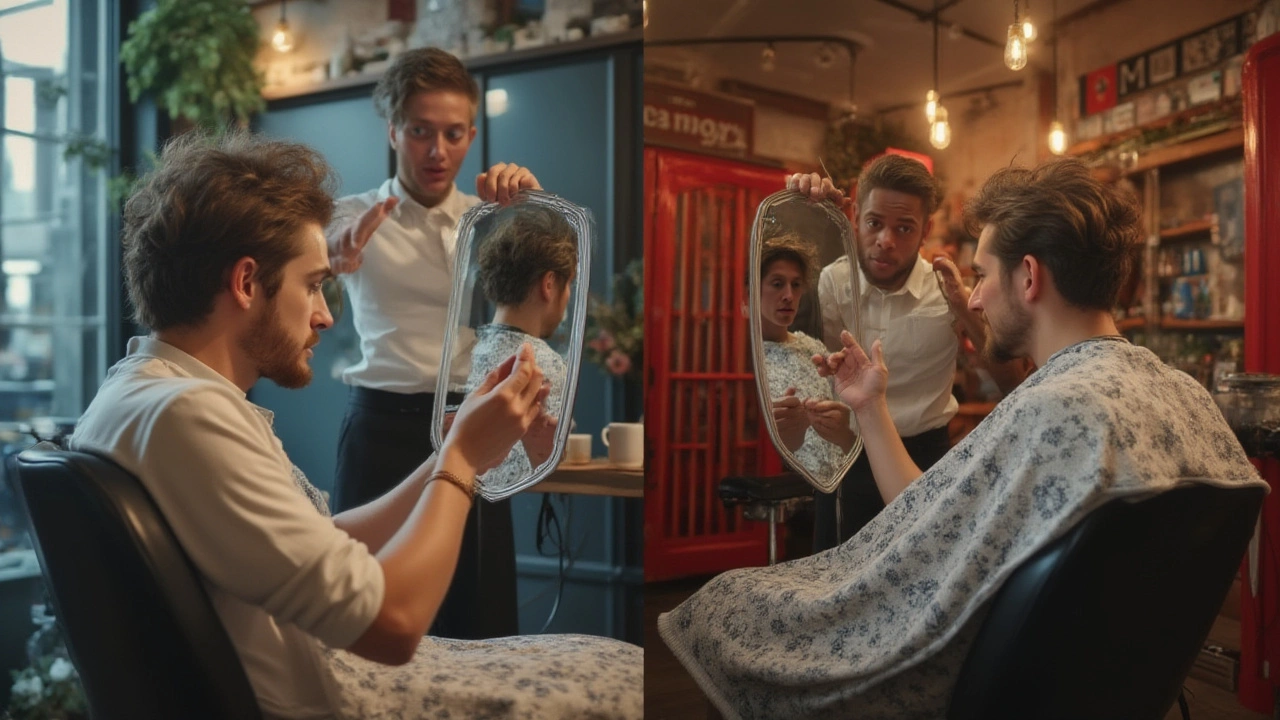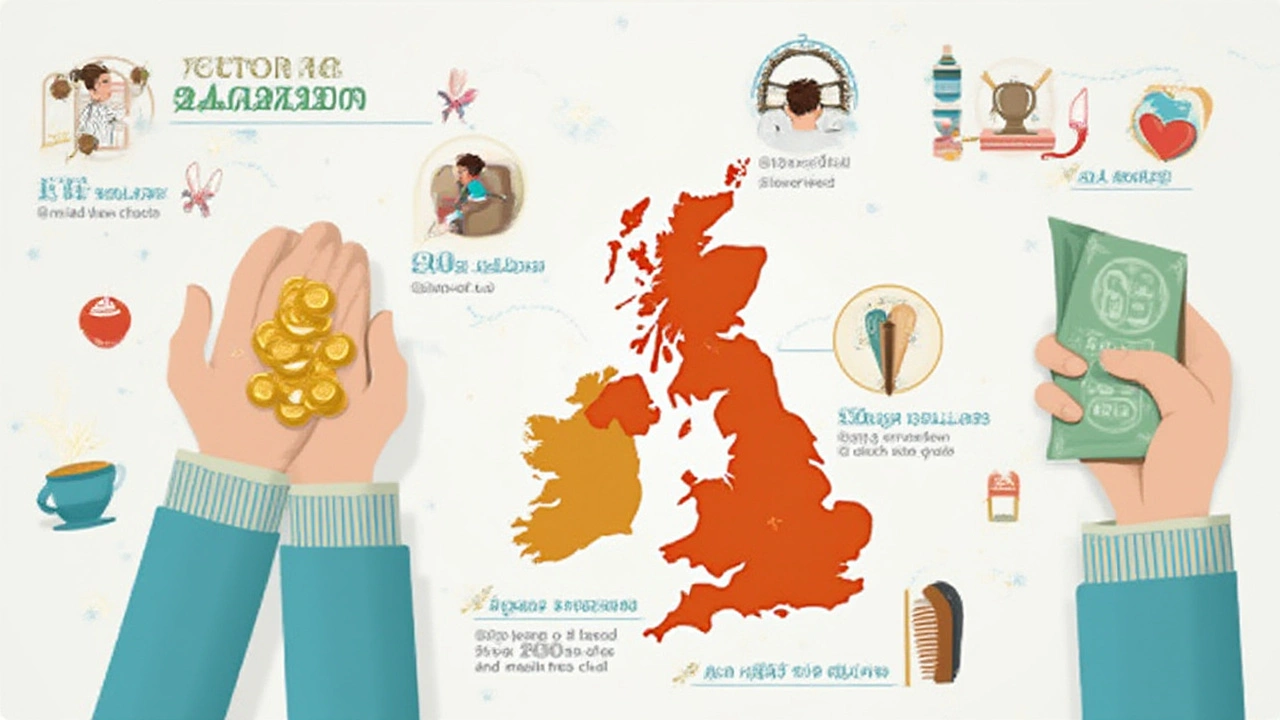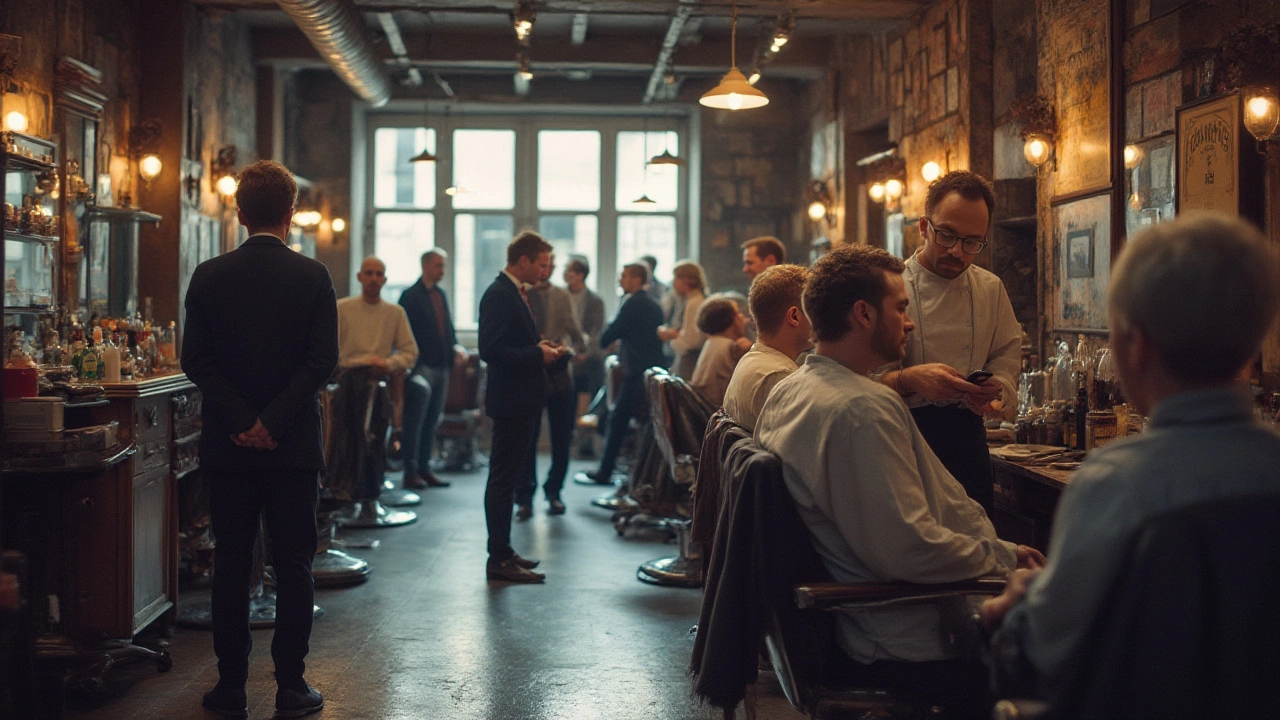You’ve just sat in the chair. The hairdresser snips away, chit-chat flows, and then you get to the cash register: $30 for a quick trim? Some folks wince and others just shrug. So is $30 a lot for a haircut, or does the price make sense?
What Goes Into the Price of a $30 Haircut?
At first glance, thirty dollars for a haircut can seem like a lot, especially if you’re used to popping into a local barbershop for something cheaper. But when you look closer, the number isn’t just about those fifteen minutes in the chair. It’s layers—like an onion, or, well, really complicated hair.
Salons have to pay rent (in nice parts of town, that alone can blow your mind), provide licensing and training for staff, buy professional scissors (those shears can run over £500), and invest in top-notch hair products. And those towels, the funky Instagrammable plants, and even the coffee you might get? Someone’s paying for all that. Most salons in England, according to a 2024 survey by the British Hairdressing Council, spend about 60% of their revenue just staying open. That's not even paying staff yet.
Your hairdresser isn’t just someone waving scissors around either. Most stylists train full-time for a year before they start working, and then keep up skills with workshops and new techniques. That’s time and tuition, not to mention the infamous ‘hairdresser’s wrist’ aches no one warns you about.
Then, the infamous VAT. Salons in the UK pay 20% VAT on all services. If your haircut is £24, a fiver of that goes straight to the taxman. So the salon isn’t swimming in money, even if the haircut seems pricey.
The equipment alone is more than just scissors and a comb. There are clippers, razors, capes, sanitizing sprays, and loads of cleaning products. During the COVID-19 pandemic, costs shot up even more because of all the added PPE and cleanliness standards. Some salons in Brighton shared they spend about £120 a week just on cleaning and supplies now—double what they did in 2019.
And those perks—a head massage, the little glass of Prosecco, that sharp piece of chocolate—aren’t really “free.” They’re folded right into how the salon builds the price. Ever been to a fancy salon in London? You could pay £80+ for a cut, but get free WiFi, drinks, and the beauty of a central location. Context matters. So, a $30 (£24) haircut often reflects the behind-the-scenes costs you just don’t see.
Comparing Haircut Prices Around the World
Curious how much a haircut costs elsewhere? Dig into some real numbers and the range is wild. In Tokyo, you’ll find budget salons charging $10 for a quick cut, while high-end shops can charge $120 or more. In the US, a simple men’s cut in New York averages around $40 in 2025, while women’s cuts can hit $80 or higher in trendy salons.
Australia leans pricey. In Sydney, men pay about A$35 for a basic cut and women often fork over A$65 to A$120 for a women’s cut and blow-dry. Scandinavia? Even pricier. In Stockholm, you can’t find a professional haircut for less than 400 SEK (about $38), and that’s for the basics. If you want anything fancy, you’re heading toward $70 easily.
Southern Europe offers bargains if you’re flexible—a short cut in Lisbon or Athens might be under $20, but the quality and service may not match what you’d get in a higher-end salon. Some people grab a cheap cut abroad because they’re traveling or trying something new, but many say there’s a tradeoff in comfort and skill.
Here’s a handy table of average cost for a “typical” men’s or women’s haircut in popular cities (2025 survey):
| City | Men’s Cut ($) | Women’s Cut ($) |
|---|---|---|
| Brighton | 27 | 38 |
| London | 45 | 70 |
| New York | 40 | 86 |
| Sydney | 37 | 102 |
| Stockholm | 38 | 62 |
| Tokyo | 16 | 44 |
| Lagos | 8 | 25 |
| Paris | 28 | 50 |
Context changes everything. In Brighton (hello, seaside breeze and indie coffee shops), $30 is perfectly normal at mid-range salons. In a tiny rural town in Eastern Europe, you’d probably get three haircuts and a cappuccino for that amount. You get what you pay for, and the going rate has a lot to do with where you live.

Is a Haircut Worth It? Value, Quality, and Experience
The “worth” of a haircut isn’t just the number on the receipt. It’s about trust, skill, and how you want to feel when you walk out. Ever got a bargain cut that looked fine when wet, but was a wonky mess the moment you tried styling it at home? Or left a pricier salon and felt like you could run for prime minister because your confidence rocketed?
A good cut lasts longer. Not just in how quickly it grows out, but in how well it holds its shape. Hair that's been expertly layered, textured, or faded by someone who knows what they’re doing will behave for weeks, not days. That means fewer visits to the salon and less stress wrangling your look every morning.
There’s also the personal stuff. Your stylist remembers your weird cowlick. She knows that last time you tried bangs, there were some tears involved. That rapport matters. There’s a study from 2022 by the UK Salon Owners’ Federation showing customer happiness scores jump 40% when they get the same stylist each time, even if the price is a bit higher.
Some places add extras that really do tip the value: hot towels, toner for blondes, even shaping your eyebrows or beard with the cut. These “little” services add up to an experience. And for a lot of us, that’s worth a fiver or ten added to the bill.
But if you’re on a tight budget or don’t really care about style, a $30 haircut may feel like overkill. That’s why high street barbers and student salons exist—because not everyone wants bells and whistles. The real value? How good you feel about the result, not just the wallet impact.
Tips for Getting the Best Value From Your Haircut
Just because you’re spending $30 doesn’t mean you can’t maximize what you get. The trick is to be savvy. Start by checking reviews—Google, Facebook, and even Instagram can give you a picture of what the place is known for. A spot with hundreds of five-star reviews and a busy booking calendar probably won’t botch your fringe.
Ask about what services are included. Sometimes a $30 fee covers only the basics, but other salons toss in a wash, blow-dry, or some light styling. Make sure you’re comparing apples to apples when you look around. If you want something special—balayage, curly cuts, edgy fades—don’t assume it’s part of the standard price.
Try booking with a junior stylist or during off-peak hours. Many salons offer 20% discounts for weekday appointments between 9 and 11am. Student salons are another alternative—you might have a trainee cutting your hair, but they’re supervised and enthusiastic (and you’ll save money).
Bring photos for inspiration, but listen when your stylist offers advice. A good hairdresser will tell you honestly if your dream style won’t work with your face or hair texture, which saves you both money and heartache.
- Be clear about your expectations and any non-negotiables.
- See if there are loyalty cards or refer-a-friend rewards.
- Ask for product recommendations and aftercare tips; maintaining a fresh cut means less frequent trips.
- If you find a stylist you love, stick with them—consistency leads to better results over time.
Don’t forget to budget for tips. In the UK, tipping isn’t compulsory, but rounding up or adding a pound or two for great service is always appreciated.

What Alternatives Exist for Cheaper or DIY Haircuts?
If $30 is just too much, there are solid ways to keep your style sharp for less. DIY isn’t just for YouTube bravehearts anymore: in 2024, searches for “cutting my own fringe” doubled in the UK. There’s a learning curve—Google “home haircut fails” at your own risk—but lots of people get good enough for trims between salon visits. Some tools, like the Flowbee (yes, it still exists), make at-home grooming less intimidating.
Students often offer cuts for a bargain in training colleges. You’ll pay £5-10 under the watchful eyes of tutors, and while a student’s not as fast as a seasoned pro, their results are better than you’d expect. In Brighton, Brighton MET College has open salon days every other Saturday.
If you’re open-minded, try “hair models” for new stylists or during competitions. Many salons need volunteers for practicing new techniques and will even do it free if you’re brave. There’s risk, but also serious reward if you love a makeover.
For men, walk-in barbers often charge less, especially if you stick to simple cuts (clippers all over, no styling). Some Turkish barbers in England offer cuts for under £15, with speedy service and the occasional flaming ear wax removal thrown in (don’t try that at home).
Subscription services are cropping up for more frequent haircuts at lower total monthly spend. In London and Manchester, you can get unlimited beard trims for £30/month, which makes sense if you like to stay extra crisp.
- Check if your workplace offers wellness vouchers for salon services—they’re rare but exist in larger companies.
- Some salons run promotions for new clients—keep your eyes peeled for first-visit deals.
- Consider spacing out haircuts: A well-shaped cut can last 2-4 months, especially if you have longer hair.
- Split costs with friends—some stylists do home visits and group bookings for a discount.
In the end, what counts as “expensive” for a haircut is all about perspective and priorities. Hair is one of the first things people see—it’s personal. Whether you splurge or save, knowing what goes into the price means you can decide the value for yourself, without the sticker shock.

